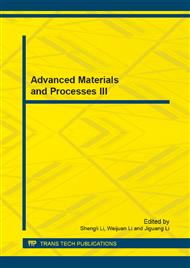p.787
p.792
p.797
p.802
p.806
p.810
p.814
p.818
p.822
Investigation of Deformation and Damage of Taylor Impact Test
Abstract:
Taylor impact tests are used as experimental and numerical tests for determining the mechanical behavior of materials subjected to high strain rates. Taylor impact tests are numerically simulated in the velocity range from 150m/s to 250m/s. Deformations of different impact velocity; impact damages of the axis centre; and the reasons of impact damage are discussed in the numerical simulation of Taylor impact test.
Info:
Periodical:
Pages:
806-809
Citation:
Online since:
September 2013
Authors:
Keywords:
Price:
Сopyright:
© 2013 Trans Tech Publications Ltd. All Rights Reserved
Share:
Citation:


